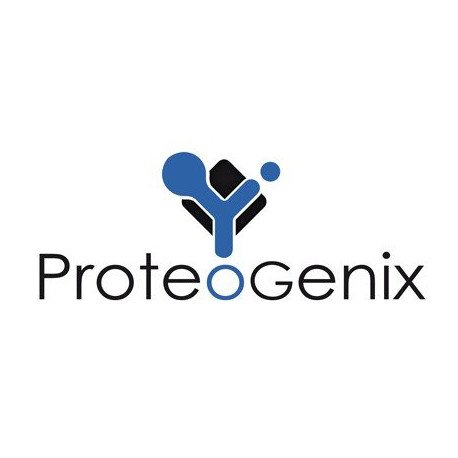Cart 0 Product Products (empty)
No products
To be determined Shipping
0,00 € Total
Prices are tax excluded
Product successfully added to your shopping cart
Quantity
Total
There are 0 items in your cart. There is 1 item in your cart.
Total products (tax excl.)
Total shipping (tax excl.) To be determined
Total (tax excl.)
Data sheet of CD9 Protein / Human CD9 Recombinant Protein
| Brand | ProteoGenix |
| Product type | Proteins |
| Origin species | Human |
| Host species | Escherichia coli (E. coli) |
More info about CD9 Protein / Human CD9 Recombinant Protein
| Brand: | ProteoGenix |
| Reference: | PX-P3040 |
| Product name: | CD9 Protein / Human CD9 Recombinant Protein |
| Product description: | General information on CD9 proteinCD9 is a transmembrane protein which belongs to the tetraspanin superfamily. It is a glycoprotein protein expressed on the cell-surface. This protein is also found on the surface of exosomes. Depending on the cell type and associated molecules, CD9 has a wide variety of biological activities such as cell development, cell growth, cell differentiation and signal transduction. CD9 proteins are also responsible for cell motility due to their interaction with integrins. This protein is part of integrin-tetraspanin complexes in the membrane of monocyte/macrophages. CD9 protein mediates the fusion between myoblasts and myotube. However, Î’1 integrin organizes fusion by associating with CD9 and controlling its expression in myoblasts. In addition, the interaction between CD protein and integrins regulates other biological processes such as platelet activation and aggregation, cell adhesion and sperm-egg fusion. The expression of CD9 protein in adult and embryonic stem cells indicates a potential role in stem cell self-renewal. It is believed that CD9 is essential for the maintenance of the undifferentiated state and the pluripotency of the stem cells. Nash et al., (2007) et Oka et al., (2002) suggest that CD9 may be a marker of the pluripotent stem cells. CD9 protein, alongside CD81, inhibits the formation of multinucleated giant cells. This protein promotes RANKL-stimulated osteoclastogenesis. RANKL on the other hand enhances CD9 expression in RAW264.7 macrophages. - Other functions of CD9 include its interaction with: - CD63 - CR2/CD21 - PTGFRN/CD9P1 - IGSF8 - PDPN - The interaction between CD9 and PDPN is homophilic and attenuates platelet aggregation and pulmonary metastasis induced by PDPN (PubMed:18541721). |
| Protein sequence: | SHKDEVIKEVQEFYKDTYNKLKTKDEPQRETLKAIHYALNCCGLAGGVEQFISDICPKKDVLETFTVKSCPDAIKEVFDNKFHI |
| Molecular weight (tag included): | 10,5 kDa |
| Purity: | 90 percent |
| Fragment type: | Partial |
| Expression system: | Procaryotic expression |
| Origin species: | Human |
| Host species: | Escherichia coli (E. coli) |
| Buffer: | PBS,pH 7.5 urea +8M |
| State in the vial: | Frozen |
| Alternative names: | CD9, TSPAN29, 5H9, BA2, BTCC-1, DRAP-27, GIG2, MIC3, P24, Tetraspanin 29, Cell growth-inhibiting gene 2 protein, Leukocyte antigen MIC3,Motility Related Protein |
| Uniprot id: | P21926 |
| Storage condition: | CD9 protein is stored:At 4 degrees for short term period (less than a week) At -20 degrees or -80 degrees for long term period RecommendationsIt is important to avoid avoid freezing/thawing cycles 20-40% glycerol may be added to improve cryoprotection |
| Delivery time: | Europe: 10-25 working days USA & Canada: 12-28 working days Rest of the world: 10-28 working days |
| Delivery condition: | Dry Ice |
| Related products: | Human EGF Recombinant Protein Human FLOT1 Recombinant Protein Human HSPA8 Recombinant Protein |


